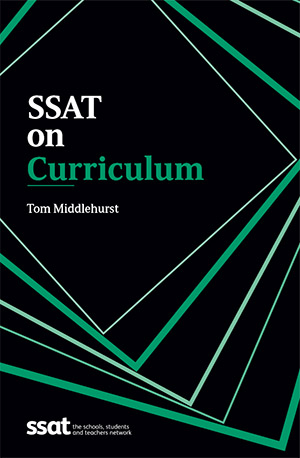
Did you know? You can access 100s of resources by becoming an SSAT member.
Login or enquire today.
SSAT on Curriculum
Discussions around curriculum are sometimes divisive and hotly argued. What is surprising, perhaps, is how infrequently these ideas are discussed at a school level and result in positive changes in the school curriculum – especially considering that the vast majority of educators would agree with Dylan Wiliam’s definition, above, which emphasises the crucial nature of a school’s curriculum. The real curriculum is always created by teachers, or indeed any individuals coming into contact with students, rather than politicians or even school leaders.
This pamphlet is designed to prompt discussion in schools and introduce SSAT’s Four Pillars of Curriculum Design as well as the seven principles of a good curriculum outlined in Dylan Wiliam’s SSAT pamphlet, Principled Curriculum Design.
While it is the government’s prerogative to determine the national curriculum, school leaders and teachers have the right to enact this as they see fit, based on their professional expertise. A national curriculum is a powerful tool for social justice; it ensures that all young people, in theory, have access to the same knowledge, understanding and experiences, regardless of where they come from or where they go to school. This has to be welcomed.
But there must also be room for local contextualisation and content. The percentage of the school curriculum that should be defined centrally is always open for debate – and readers will have different views on this. The fact remains that, compared to many education systems, English schools have a great degree of freedom on what their curriculum looks like, and how they deliver it. So teachers and school leaders have it in their power to provide a curriculum that best serves their students’ needs.
SSAT Membership
Join SSAT to gain free access to our widest range of CPD, programmes, tools and resources.

